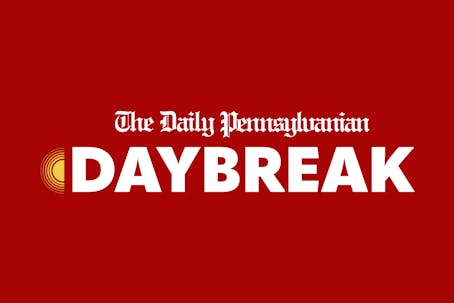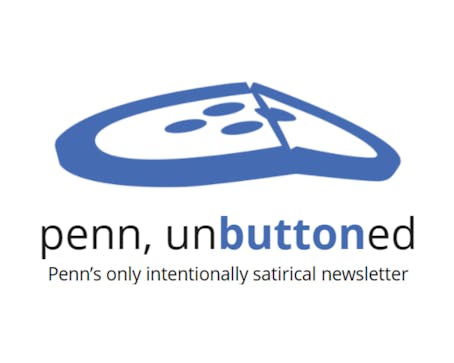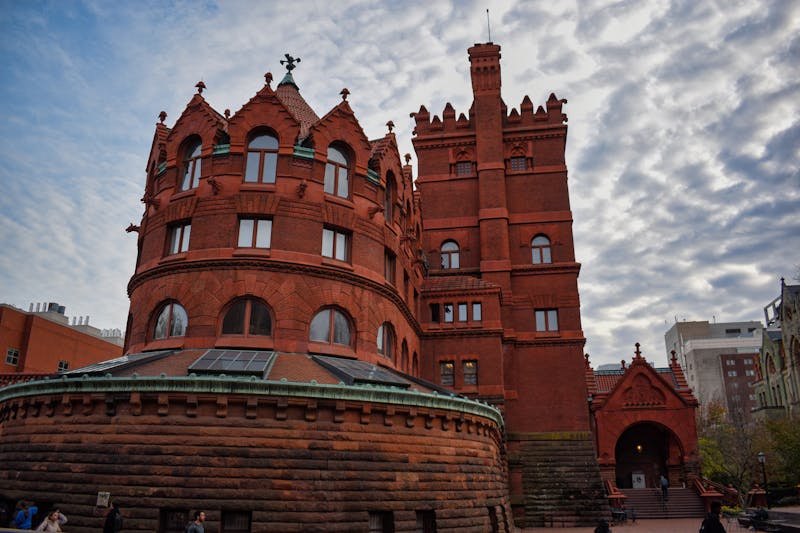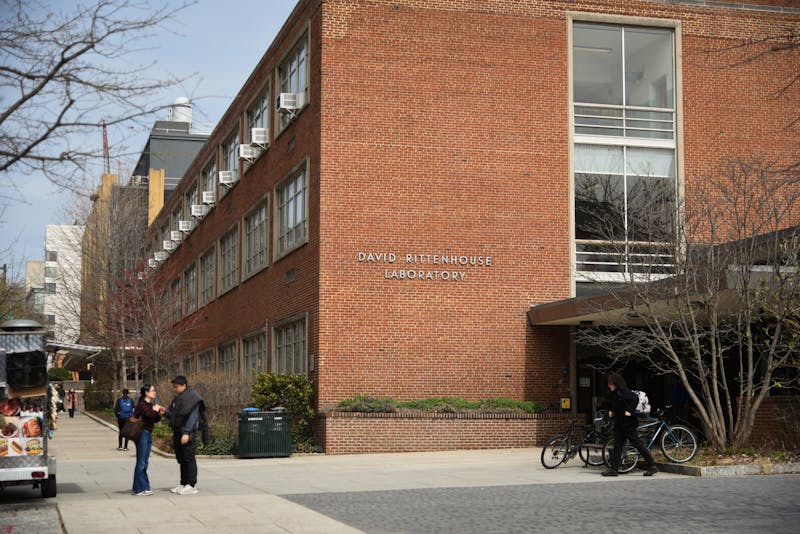
Columnist David Tran details the benefits of making 34th and 33rd streets pedestrian only to connect the Engineering School with the rest of campus.
Credit: Grace ChenIf you’ve ever had a class in David Rittenhouse Laboratory, you’ve crossed 34th Street. You know that road where you have to wait for the crosswalk guard to graciously guide you from one side to the other like it’s preschool all over again, that street where the southbound traffic becomes the bane of your existence as you’re running late for your math recitation, that street that makes DRL seem so distant from the rest of campus.
34th Street is a blemish, a detriment to fostering unity between the School of Engineering and Applied Science and the other schools at Penn. Even as the area east of 34th Street is undergoing redevelopment, with the expansion of the Stuart Weitzman Hall and a planned comprehensive renovation of DRL, the changes feel distant and lost upon the rest of campus.
I seldom see students studying at Shoemaker Green — a gorgeous open green space that’s a complete ghost town. Ironically, the most active I’ve seen Shoemaker Green was during New Student Orientation, when incoming students who were unfamiliar with the space made full use of it during the College Academic Fair. In a sad contrast, returning Penn students didn’t engage with it much at all.
Likewise, few Penn students know of Smith Walk, next to the Engineering Quad. That’s not surprising, though. Despite how beautiful it is, 34th Street simply renders it too inaccessible to fully realize its own potential right now. And at Penn, which is already barely compliant with the Americans with Disabilities Act, passing 34th and 33rd streets is dangerous and definitely far from being wheelchair convenient.
The solution to these woes? Close 34th and 33rd streets between Walnut and Spruce and make it pedestrians only. If this sounds difficult, it’s been done before. 35th, 36th, 37th, and 39th streets used to traverse across Locust Street (what is now known as Locust Walk) from Walnut to Spruce streets. Woodland Walk, the walk from Hill College House down to the Quad, used to connect Market Street to Woodland Avenue.
What about the traffic? The accessibility to Penn Medicine? We often hear the argument that “more lanes and streets mean less traffic!” No, they do not. That’s a myth long debunked by urban planning research. Adding or keeping car-centric streets does not reduce traffic; it only encourages more cars to use those streets — a concept known as induced demand. It’s not just economic, though. It’s practical.
Cities around the world are beginning to realize the advantages of pedestrian zones. Times Square in New York City exemplifies an instance where pedestrianization has boosted safety and accessibility in an area. A 2010 report from the New York City Department of Transportation reported that once Broadway was transformed into a pedestrian-only zone, pedestrian injuries dropped by 35%, and accessibility for disabled individuals improved. The conversion of Times Square included smooth pavement, curb cuts, and clear routes. If Penn could implement similar features on 34th and 33rd streets, such additions could ensure that the easternmost parts of campus are walkable and accessible.
As for Penn Med, emergency vehicles can still be given special access routes, just as they are in other pedestrianized areas of cities like New York or Boston.
Not only would the daily hassle of dodging cars become a thing of the past, but pedestrianization would also create a more inclusive and welcoming campus environment. Imagine a connected campus where outdoor lectures are held in Shoemaker Green throughout the year instead of just during NSO, where Smith Walk is a place of collaborative study, or even where the streets that are presently 34th and 33rd streets are walks lined with trees and benches with plenty of outdoor study space. We can make the heart of Penn’s campus a safer, more unified, and accessible space for everyone. After all, Locust Walk wasn’t always the bustling, charming corridor it is today — it was a street just like 34th. Change is possible, and it will lead to something much better.
Let us create a vibrant, pedestrian-friendly space that connects every corner of campus, bringing DRL and Smith Walk closer to the center of student life. It’s time to make 34th Street pedestrian.
DAVID TRAN is a College first year studying urban studies from Fort Worth, Texas. His email is ddtran@sas.upenn.edu.
The Daily Pennsylvanian is an independent, student-run newspaper. Please consider making a donation to support the coverage that shapes the University. Your generosity ensures a future of strong journalism at Penn.
Donate











